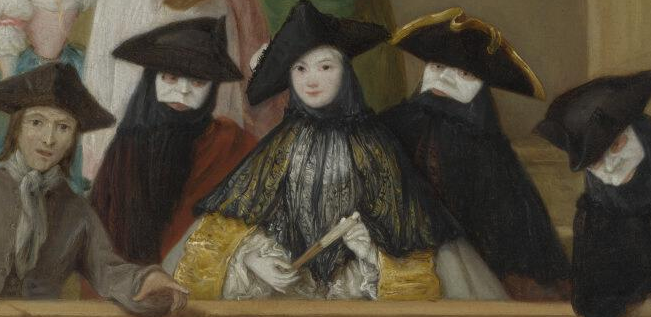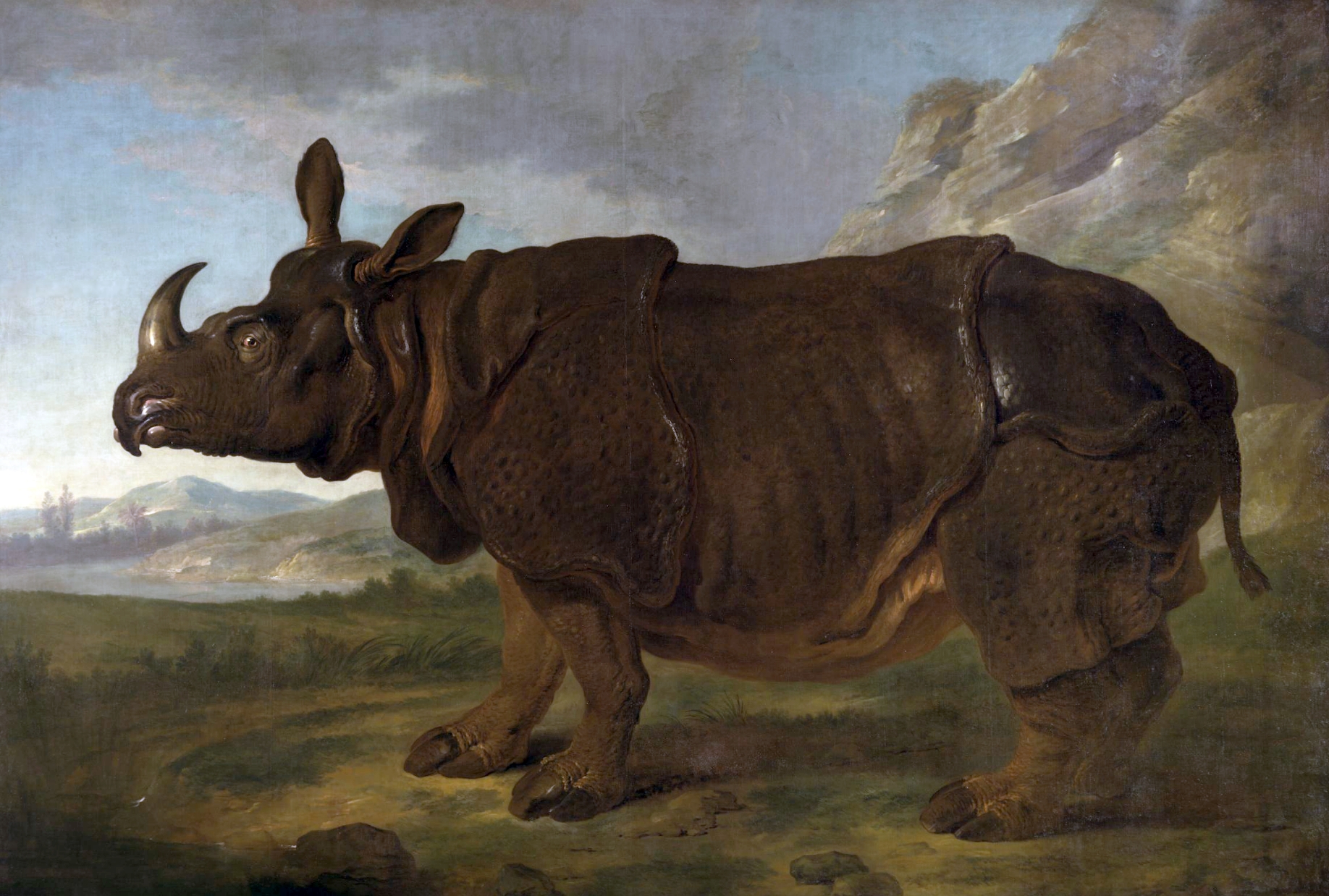Many famous and refined beauties lived in the eighteenth century, but none possessed a beauty so striking and none kept the entire Europe fascinated as much as Clara, the rhinoceros. Her exotic beauty and chiseled features caught the eye of many artists of the day, Pietro Longhi and Jean-Baptiste Oudry to name a few. Clara loved being a part of the art world, but she never allowed the fame to get to her head and stayed humble to the end.
 Pietro Longhi, Clara, the rhinoceros in Venice, 1751, oil on canvas, 62×50 cm
Pietro Longhi, Clara, the rhinoceros in Venice, 1751, oil on canvas, 62×50 cm
Clara (1738-1758) was an absolute Rococo sensation; orphaned at a very young age after her parents were allegedly killed by Indian hunters she was brought to Europe, in Rotterdam, and afterwards continued traveling the continent and bringing delight wherever she went. She had the life of a rock star two centuries before the rock stars; common folk admired her and talked about her, authors wrote about her in the encyclopedia, and painters painted her. In January 1751, she found herself in Venice right in the carnival time and she caused quite a sensation in the ever so inquisitive Venetian society. This was about time when Longhi painted her. In his painting, a small crown of eight figures has gathered to see Clara. The composition is very interesting; the wooden fence visually divides the canvas in two parts; the foreground where Clara is languidly eating hay, and the foreground where the figures of the observers are. Some of the curious Venetians are wearing masks, it was the carnival time after all, and why not.



Some men in the first row are wearing white masks which are called “bauta”. The female figures behind them are dressed in shining silks, woman in the blue gown is wearing a black “moretta mask” which is held by the teeth and the wearer is prohibited to speak while wearing it, but this also enable the silent language of seduction to develop; a bat of the eyelashes, a wink, a nod suddenly got intense meanings. The woman in green silk cloak is holding the same mask in her hand, but showing her pale oval face. The man on the far left, the arrogant laughing chap without the mask, is holding Clara’s horn which she had either rubbed off while in Rome, or it was cut off, but anyhow a new one later grew. Longhi’s painting is, common for his work, rather small. French painter Jean-Baptiste Oudry, on the other hand, had painted her two years prior to Longhi, in 1749, in full size. How monumental and regal she looks, big and shining against the landscape, one can really imagine her wearing a red velvet cloak and a crown with rubies.
 Jean-Baptiste Oudry, Clara the Rhinoceros, 1749, oil on canvas, 310×456 cm
Jean-Baptiste Oudry, Clara the Rhinoceros, 1749, oil on canvas, 310×456 cm
Pietro Longhi is renown for his intimate portrayals of the Venetian society in the mid eighteenth century or the settecento. While Antonio Canaletto focused on grandiose vedute, and Givanni Battista Tiepolo on dramatic religious paintings; Pietro Longhi offered a glimpse of what goes on “behind the closed doors”, literally and figuratively because he not only painted the witty interior scenes, but also gave us an insight in the frivolous and decadent Venetian society just before its final fall at the end of the eighteenth century.



Great story!
LikeLiked by 1 person
Thank you! 🙂
LikeLiked by 1 person